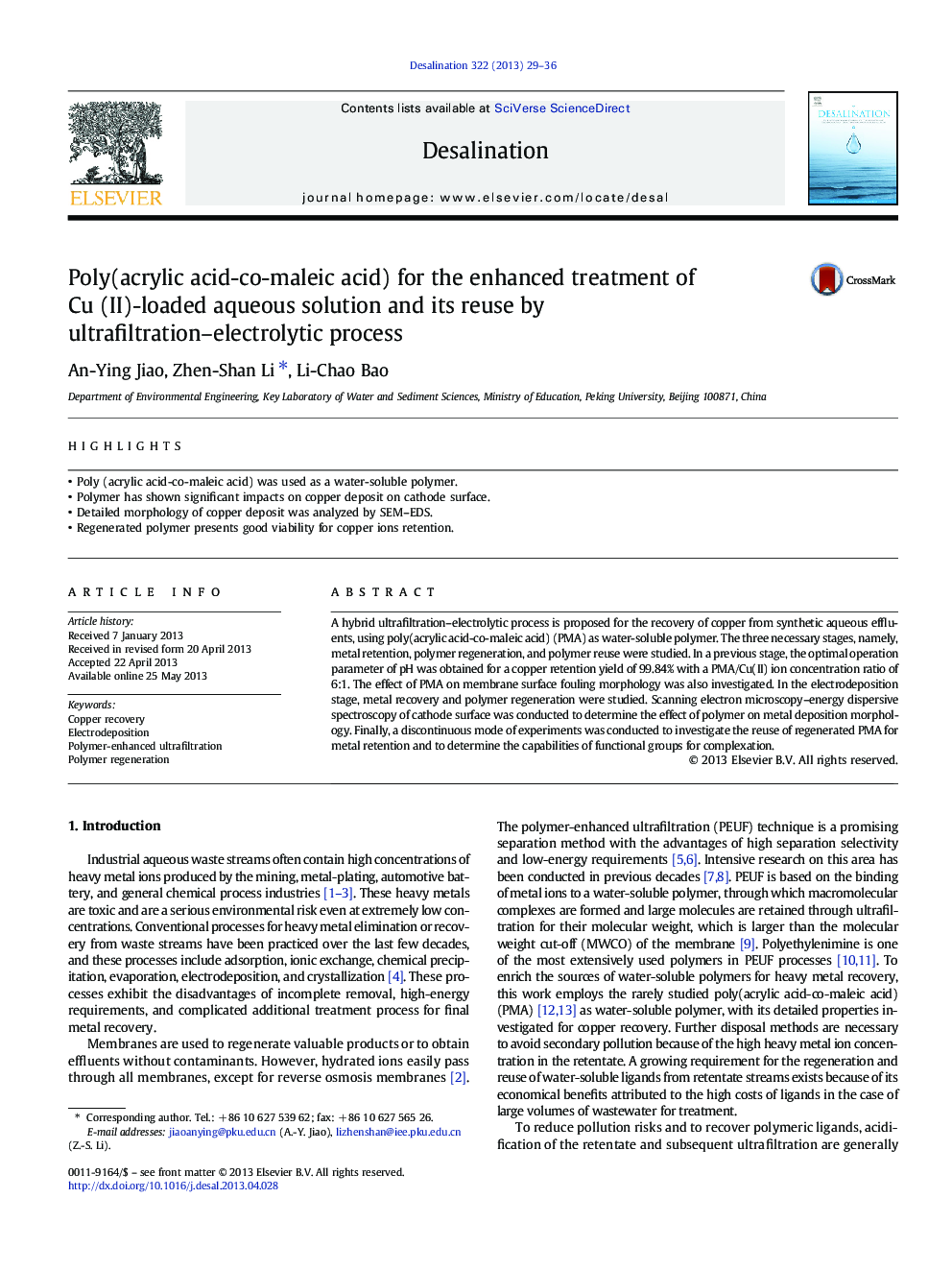| Article ID | Journal | Published Year | Pages | File Type |
|---|---|---|---|---|
| 623988 | Desalination | 2013 | 8 Pages |
•Poly (acrylic acid-co-maleic acid) was used as a water-soluble polymer.•Polymer has shown significant impacts on copper deposit on cathode surface.•Detailed morphology of copper deposit was analyzed by SEM–EDS.•Regenerated polymer presents good viability for copper ions retention.
A hybrid ultrafiltration–electrolytic process is proposed for the recovery of copper from synthetic aqueous effluents, using poly(acrylic acid-co-maleic acid) (PMA) as water-soluble polymer. The three necessary stages, namely, metal retention, polymer regeneration, and polymer reuse were studied. In a previous stage, the optimal operation parameter of pH was obtained for a copper retention yield of 99.84% with a PMA/Cu(II) ion concentration ratio of 6:1. The effect of PMA on membrane surface fouling morphology was also investigated. In the electrodeposition stage, metal recovery and polymer regeneration were studied. Scanning electron microscopy–energy dispersive spectroscopy of cathode surface was conducted to determine the effect of polymer on metal deposition morphology. Finally, a discontinuous mode of experiments was conducted to investigate the reuse of regenerated PMA for metal retention and to determine the capabilities of functional groups for complexation.
